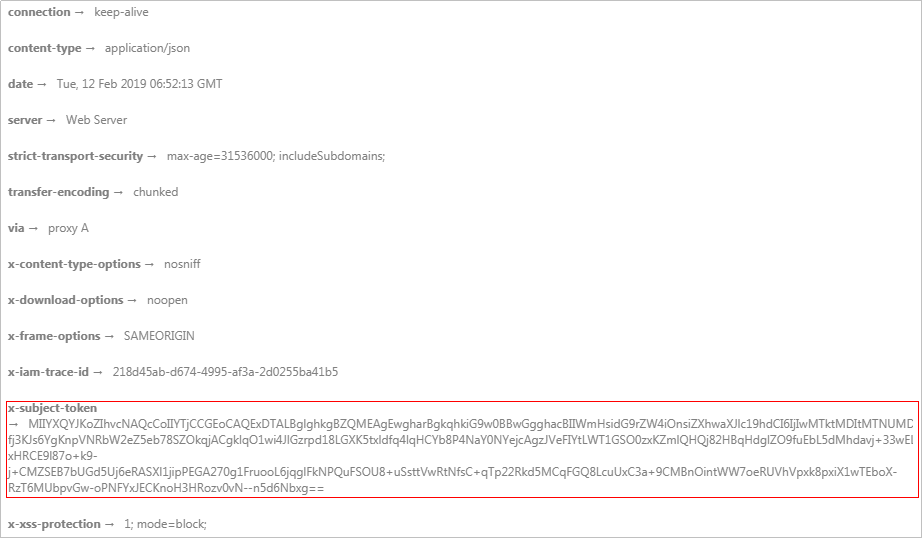Response
Status Code
After sending a request, you will receive a response, including a status code, response header, and response body.
A status code is a group of digits, ranging from 1xx to 5xx. It indicates the status of a request. For more information, see Status Codes.
If status code 201 is returned for calling the API used to obtain a user token, the request is successful.
Response Header
Similar to a request, a response also has a header, for example, Content-type.
The following figure shows the response header fields for the API used to obtain a user token. The x-subject-token header field is the target user token. This token can then be used to authenticate the calling of other APIs.

Response Body
The body of a response is often returned in structured format as specified in the Content-Type header field. The response body transfers content except the response header.
For the API used to obtain a user token, the response body is as follows: The following example is part of the response body for the API used to obtain a user token:
{
"token": {
"expires_at": "2019-02-13T06:52:13.855000Z",
"methods": [
"password"
],
"catalog": [
{
"endpoints": [
{
"region_id": "xx-xxxxxx-1",
......
If an error occurs during API calling, an error code and the corresponding error message will be displayed. The following shows an error response body:
{
"error_msg": "The format of message is error",
"error_code": "AS.0001"
}
In the response body, error_code is an error code, and error_msg provides information about the error.
Feedback
Was this page helpful?
Provide feedbackThank you very much for your feedback. We will continue working to improve the documentation.See the reply and handling status in My Cloud VOC.
For any further questions, feel free to contact us through the chatbot.
Chatbot





